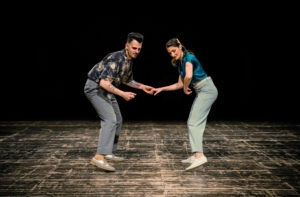
Boogie Woogie: from ‘Barrelhouse’ to dancesport sensation
The term Boogie Woogie indicates both a dance and musical
The 1940s were a legendary decade, they were years consumed by war, and yet bore the hope of new beginnings: the Second World War changed everything, the entire American population united in patriotism and even Hollywood celebrities and baseball champs enlisted in the army. Habits inevitably changed. The war was followed by fresh starts and new beginnings in absolutely every walk of life and aspect of society, which paved the way for the fabulous 50s and the age of consumerism.
The 1940s were years marked by war and new beginnings: the first half of the decade was deeply and painfully scarred by the Second World War which began with the German invasion of Poland in 1939. Years later on 6 June 1944, otherwise known as D-Day, allied troops landed in Normandy, initiating the decline of the powers of the ‘Axis’ alliance. This led to the definitive fall of the Nazi-fascist totalitarian regimes and also signalled the beginning of the Cold War.
The first half of the 1940s was deeply marked by the Second World War: the years 1939 to 1945 profoundly impacted the culture and lifestyle in every country involved in the global conflict. The population had to learn to cope with rationing, being able to purchase only what was nationally allocated in order to guarantee all citizens the essential bare minimum for survival. Constraints affected every aspect of American daily life.
As a result of the global conflict, the 1940s were years of war and deprivation, but also of recovery and new beginnings that marked the transition from war to peace. In 1945 the United States commenced atomic warfare, bombing Hiroshima on 6 August and Nagasaki three days later on 9 August 1945. Shortly after on 2 September 1945 Japan signed its surrender, concluding the Second World War. The following years were rich in creativity and initiative: there was a huge focus on economic recovery and reclaimed happiness, and new prospects offered by everyday life were reflected in the optimism of society. From fashion, to cinema, to cars, everything changed in the post-war years.
1940s fashion represents a perfect mix of comfort and glamor for both men and women, and still remains incredibly relevant today. Men wore suits, with of course ties and hats. Women wore clothes appropriate to the time of day, and added style to each moment of the day with matching gloves, coloured shoes, and leather bags. The 1940s also saw jeans start to take hold in fashion, with a helping hand from future super stars Marlon Brando, James Dean, and Elvis Presley.
1940s fashion had two distinct phases: during and post-war. During the war even fashion was inevitably affected by national constraints and rationing for the use of fabrics and materials such as wool and nylon for example. In fact women’s clothing was manufactured using the same materials as those utilised for military apparel.
Hence garments became decidedly more functional: hems were shortened to save on fabric, and clothes were simple and bore very few adornments. Fashion mirrored military styling and utilised versatile and economic artificial or semi-synthetic fibres such as Rayon.
It was necessary to be inventive and recycle as much as possible, and knitting became a-la-mode as women tried to create different items of clothing and accessories for themselves.
After the war, women opted for bright and colorful dresses and skirts, and outfits were designed for every part of the day. Suits were very popular, as were dresses cinched at the waist with small belts, and close fitting skirts worn with blouses.
The 1940s silhouette was characterized by jackets with shoulder pads, cinched waistlines, and pockets, allowing women to carry documents and money on their persons. Women also started to wear trousers more, projecting an image of independence, and at the same time, elegance.
Popular shoes had high wedge heels made from either cork or wood. And gloves were an indispensable fashion accessory that could be worn at any time of day, and coordinated to match the rest of the outfit.
Fur was very in demand and regarded as a symbol of status. Animal skins and furs were used to decorate luxury dresses, overcoats and accessories. Leather and crocodile skin handbags were all the rage, as were leather shoes, especially in the patriotic colours red, white, or blue.
Men’s fashion in the 1940s was also influenced by constraints imposed by the war and the necessity to use poorer quality materials: with rationing, men’s fashion went from elegant to functional and minimalist.
In the United States and beyond, style was characterized by sober colors and simple lines. Rayon was a popular fabric: its shiny appearance reminiscent of silk added a touch of elegance but at a much lower cost. And the victory suit (a double or single-breasted suit) favoured functionality and practicality over elegance: they came in dark colors, plain or pinstripe, and often in wool. It was a pretty sober look.
Jackets were shorter, trousers were tighter (without creases or edges), and 1940s suits often didn’t include waistcoats; they were considered superfluous in a time of economic hardship.
Ties remained indispensable however, and came in a variety of bright colours. Braces replaced belts, and informal comfortable shoes for everyday activities were introduced on the market. The Fedora hat was the must-have accessory, made famous by popular films of the day. They were made from stiff felt in black, grey or brown, and worn tilted to one side. They were considered perfect for any occasion.
Generally in the 1940s, men wore suits, they were essential to men’s fashion. Not just the suit, but the whole look, complete with tie and hat. It was a symbol of style and elegance.
Hats were also fundamental to the female wardrobe, as were turbans, which were a useful way of covering up hair that may have been less well-groomed than in the past due to the difficult economic situation.
Although clothing had become forcibly more austere and simplified, hats became an outlet of creative freedom. Unusual and often recycled materials formed severe lines and imaginative shapes that contrasted with the outfits they were worn with. Hats were a way of adding a touch of class to a look, and helpfully hiding less kempt hair than in previous years.
Turbans covered the whole head (hiding all hair underneath), and were also often made from recycled fabrics. Hair at that time was generally worn long and with a slight wave. Long hair was easier to style into a bun or hairstyles that involved creating volume around the head like the infamous ‘victory rolls’. There was a trend amongst younger women to wear their hair loose and wavy, it became a symbol of femininity.
1940s makeup was as practical as possible and designed especially for working women: products became multifunctional such as red lipstick that was used to color both lips and cheeks.
To stand out eyebrows become arched and thin and slicked down with petroleum jelly. The fashionable thin lips of the 1930s changed radically to a much plumper shape by the application of lip liner outside the natural contour. Red lipstick was the lipstick of the decade, matched with the same colour nail polish on short, half-moon nails. Lipsticks had a matte finish, but shine was added with petroleum jelly. Compact face powder was also introduced for the first time to immense success and it was generally worn in a lighter shade than one’s natural skin tone.
Eye makeup mainly consisted of brown and champagne coloured eyeshadows, with a touch of eyeliner and mascara.
After the Second World War, music, dance, cinema, and sport, all became sources of hope. Americans looked to the future with renewed optimism in every aspect of everyday life.
Popular music in the 1940s defined the Swing era. It was the age of Glenn Miller, Frank Sinatra, Nat King Cole, Ella Fitzgerald, Louis Armstrong, Doris Day… the list goes on. The radio alternated ballads with frenetic dance numbers, which were hugely popular in this period, and ballrooms reigned supreme as large dance halls played host to big bands in what turned out to be their most significant period in history.
Thanks to the Jam sessions held in two particular clubs in Harlem, jazz developed a new style in around 1945: bebop was characterized by complex harmonies and very fast tempos.
Swing emerged as the most popular musical style of the decade as big bands toured throughout the country. The 1940s also marked the beginning of the golden age of swing singers.
New economic conditions resulting from the war forced the demise of most of the big band orchestras, only the major ones such as Duke Ellington, Count Basie, and Woody Herman survived.
Country, also known as country music, country and western, or country-western, developed a popular following in the 1940s and became established as an independent musical genre.
The 1940s were the decade of the crooner, from Bing Crosby to Frank Sinatra to Perry Como.
Frank Sinatra was an American singer, actor, and producer of Italian descent, and arguably the most popular and influential artist of the twentieth century. Known as ‘The Voice’, he was one of the most prolific musical artists of the century.
Trumpet player, singer, and actor, Louis Armstrong was perhaps the most famous jazz musician of the twentieth century. His unrivalled popularity helped to promote and spread jazz to a wider audience, increasing its popularity amongst the general public.
A multi-talented artist with a long career, Bing Crosby possessed one of the most loved voices of the twentieth century: American singer, actor and comedian, he was one of the first musicians to devote himself to cinema, and to enormous success. His recording of White Christmas is the best-selling single of all time.
American singer, pianist, and actor Nat King Cole is recognised by the warm persuasive tones of his voice. He was the first African-American artist to get his own radio show and was involved in the fight against racial segregation throughout his life.
Ella Fitzgerald is considered one of the best and most influential jazz singers in history: a 14 times Grammy winner, she was gifted with a beautiful and powerful voice ranging three octaves. She made over 70 records that sold over 40 million copies.
Billie Holiday is regarded as one of the greatest jazz and blues artists. Her notorious repertoire included God Bless the Child, Lover man, Billie’s Blues, and Stormy Weather. She was very influential to the singers of subsequent generations.
European artist Édith Piaf was the most famous ‘chanson’ singer. Nicknamed the “Sparrow” due to her small stature, she achieved world fame for her voice modulation.
Glenn Miller was one of the foremost jazz musicians and band leaders of the Swing era. He was an acclaimed composer and wrote many popular songs including ‘Moonlight serenade’. He won three Grammys, and his arrangements also brought fame to songs by other composers.
A great musician and clarinet player, Benny Goodman made his mark on the swing era. In the 1930s and 1940s he was one of America’s most respected performers. His continually evolving style tracked the transition from classic Jazz to Swing to Bebop, and led the way for many other artists of the time.
Social dance played a very important role in society in this period, which saw the creation and evolution of many dance styles, some of which are still going strong today.
Lindy Hop, a dance of African-American origin, emerging from Harlem in the 1920s, reigned supreme in the 1940s, and evolved its style according to the geography of where it was danced.
In fact principal differences in style became so marked as to become identified as ‘East Coast’ and ‘West Coast’, and many other Lindy Hop style variations would remain unnamed until many years later.
The Jitterbug and the Jive were also popular. They are simplified variations of Lindy hop that don’t have as many steps, making them easier and more accessible to a greater number of people. The Jitterbug and Jive were danced to Rhythm’n’Blues and Boogie Woogie beats as well as Swing.
Ballroom dances were still going strong, such as the Foxtrot, danced in 4/4 time, and the Charleston, another pearl of the 1920s, some of whose steps became integrated into the swing dances of the 1940s.
Balboa was still immensely popular, and thanks to the close contact between partners and its tight and fast steps, was sometimes the only solution on a super crowded dance floor.
Originating in the 1920s, Shag was also danced to fast jazz, swing, or western swing music. Just like Lindy hop, its style evolved depending on where it was danced (Carolina Shag, Collegiate Shag, St. Louis Shag…)
Dances of Cuban ancestry were also very fashionable in the 1940s, especially the Mambo, which actually originated in the 1940s, and the Rumba, which is a much older dance.
The 1940s saw eight major Hollywood studios flourish and dominate the film market; these included Paramount, Metro Goldwyn Mayer, Warner Bros, RKO, and Fox – later becoming 20th Century-Fox. Each studio specialized in a particular genre and promoted its exclusively contracted stars, such as Clark Gable, John Wayne, Gary Cooper, Cary Grant, Ingrid Bergman, James Stewart, Spencer Tracy, Bette Davis, Joan Crawford, Katharine Hepburn, Humphrey Bogart, and Rita Hayworth. Cinema audiences grew in the war years, and Hollywood emerged from its dark period. During the war, documentaries, combat films, and films made by military cameramen were also made. At the end of the war, film-going audiences grew even more.
American athletes were unbeatable champions in almost all international federations and before the war, American sport was seen as a complete contrast to European sport and to the regimes of totalitarian and authoritarian states.
Even after the war, American sport continued to be a pure, non-political activity that did not involve the State, and continued to be organized by citizens through federations or colleges, in which sporting activity was given great importance.
After the Second World War, cars began to get much bigger and more luxurious, paving the way for the spectacular cars of the 1950s. In the 1940s cars radically changed in appearance and slowly began to lose their dubious connections with the underworld.
Amongst the iconic cars of the 1940s, in addition to the new Jeep, is most certainly the Lincoln Continental. Produced by a division of Ford, it remained in production from 1939 until 1948 and is synonymous with luxury. It is the car in which President John Fitzgerald Kennedy was traveling when he was killed in Dallas. The Buick Roadmaster had its moment of glory from 1946 and 1956, and by the end of the 1940s had established itself as an American classic.
The Mercury Eight was the first car produced by the Ford division of the same name. First manufactured in 1939, it was a car with innovative lines and synonymous with design, perfectly representing the cars of the 1940s. Also amongst the iconic cars of the period, before the advent of the 1950s car, the Plymouth Deluxe is not to be forgotten.
The Cadillac was without a doubt the most iconic vehicle of the period. This car, produced between the 1940s and early 1960s, dazzled more than one generation. It represented the United States during that period. A symbol of quality, class, and luxury. For decades it has embodied the car par excellence of the US, with many technical improvements added throughout the years. Another iconic car was the Chevrolet, another car company that was born in the heart of the state of Michigan.
When it comes to motorcycles, we cannot fail to mention Harley Davidson. Founded in the early 1900s, its greatest circulation was in the 1940s, both for the production of military transport for the USA to enter the war, and also for civilian vehicles.
Triumph on the other hand, was of British nationality and manufactured in Coventry, a city that was heavily bombed during the Second World War. Later it moved to the United States and enjoyed success thanks to the appearance of various models (such as the Trophy) in films in the 1940s and 1950s.
The largest American motorcycle manufacturer was, however, Indian. Models The Scout and The Chief embodied a desire for revenge and the reconstruction of America in those years. Falling from grace in the early 1950s, it left the leadership of American motorcycle production to Harley.
Films were very popular, but in the 1940s cinematic drive-ins spread like wildfire: legendary open-air cinemas at an affordable cost to everyone, 25 cents for the projection, and another 25 cents for the car. It was a hit: between 1947 and 1951 over 4000 drive-in cinemas were assembled in the States in just a few years.
The 1940s saw a huge amount of inventions and innovations in fashion, science and technology.
The bikini was invented in the 1940s after the end of the Second World War. In 1943 as part of the rationing program, the United States government decreed that swimsuit fabric had to be reduced by 10%, and so in America the classic one-piece swimsuit transformed into a two-piece. A few years later designer Luis Réard introduced the first navel-baring swimsuit, christened the bikini.
Jukeboxes spread throughout the States in the 1940s, with Wurlitzer models taking residence in America’s bars and cafeterias: it was the age of 78 rpm records and an irrepressible desire to dance.
Polaroid was an instant camera invented 1947 and for many years remained the only instant camera manufacturer.
In 1941 American guitarist Les Paul invented one of the most famous electric guitars; the solid-body. Shortly after, Gibson put them into production.
The name Frisbee actually comes from a cake produced by the factory of the same name. The tray that it came on became the famous flying saucer thanks to the innovation of some college students after consuming these cakes. Thus this easily handled flying plastic disc with aerodynamic characteristics was put into mass production.
The first color television was invented by J.Logie Baird in 1940, and in 1944 he developed the ‘telechrome’ television system which projected colour on a fluorescent screen using electron guns.
The first aerosol spray can was put on the market on June 15, 1939, after its invention some years earlier by Norwegian chemist Erik Rotheim.
Dr. Lambertsen developed the breathing apparatus used for rescuing miners that had inhaled asphyxiating gas to patent a self-contained oxygen breathing apparatus in 1939 that would go on to be used by divers in the US Navy.
The 1940s were also characterized by a new type of car, the Jeep. Initially a spartan military vehicle, adept for rough and difficult routes to the front, the Jeep transformed first into a vehicle for sporty types, then for adventure lovers, and then became popular for adventures in the city.
Following the Manhattan Project (a uranium enrichment project) that commenced in 1939, the first atomic bomb was dropped in New Mexico on July 16, 1945.
The mobile phone launched properly in the 1970s, however in 1941 the first mobile telephone in history was invented, allowing remote communication using tones “in the local frequency range”.
Velcro was invented by the Swiss engineer Georges de Mestral: it is a highly resistant material and can be fixed and detached by hand.
The invention of the microwave oven dates back to 1947, condensing energy to cook food quickly.
M&M’s were invented by Forrest Mars (inventor of Mars) and Bruce Murrie in 1942. Hence the acronym of Mars & Murrie (M&M’s).
1940s furniture denoted functionality and a renewed search for simplicity which, after the Second World War, pervaded every aspect of society.
Thus, furniture design began to simplify, becoming more essential and functional than beautiful. Furniture was mass manufactured for the first time, meaning that aesthetic period charm was abandoned in favour of comfort and simplicity.
Leather or velvet sofas with a rounded welcoming shape were in vogue at this time, and wood was the principal material used for bookcases, dressers, and practically every other item of furniture.
Record players, radios and porcelain on display were essential in all homes of the time.

The term Boogie Woogie indicates both a dance and musical
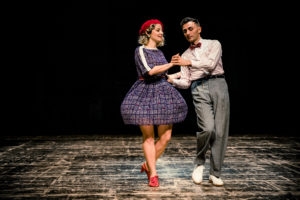
Balboa is a form of Swing dance that originated in
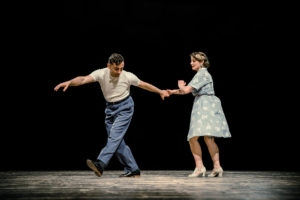
The Charleston is a style of dance that became popular
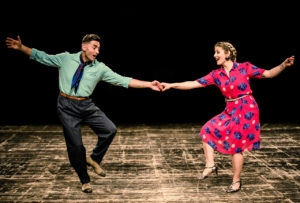
Of all of the swing dances, Lindy Hop is probably
Subscribe to the Summer Jamboree newsletter to find out all our news in advance!

Summer Jamboree as you’ve never seen it before!
Join our community – sensational exclusive content awaits you!
Copyright © 2023 Summer Jamboree S.r.l.® - VAT NUMBER: 02721450423